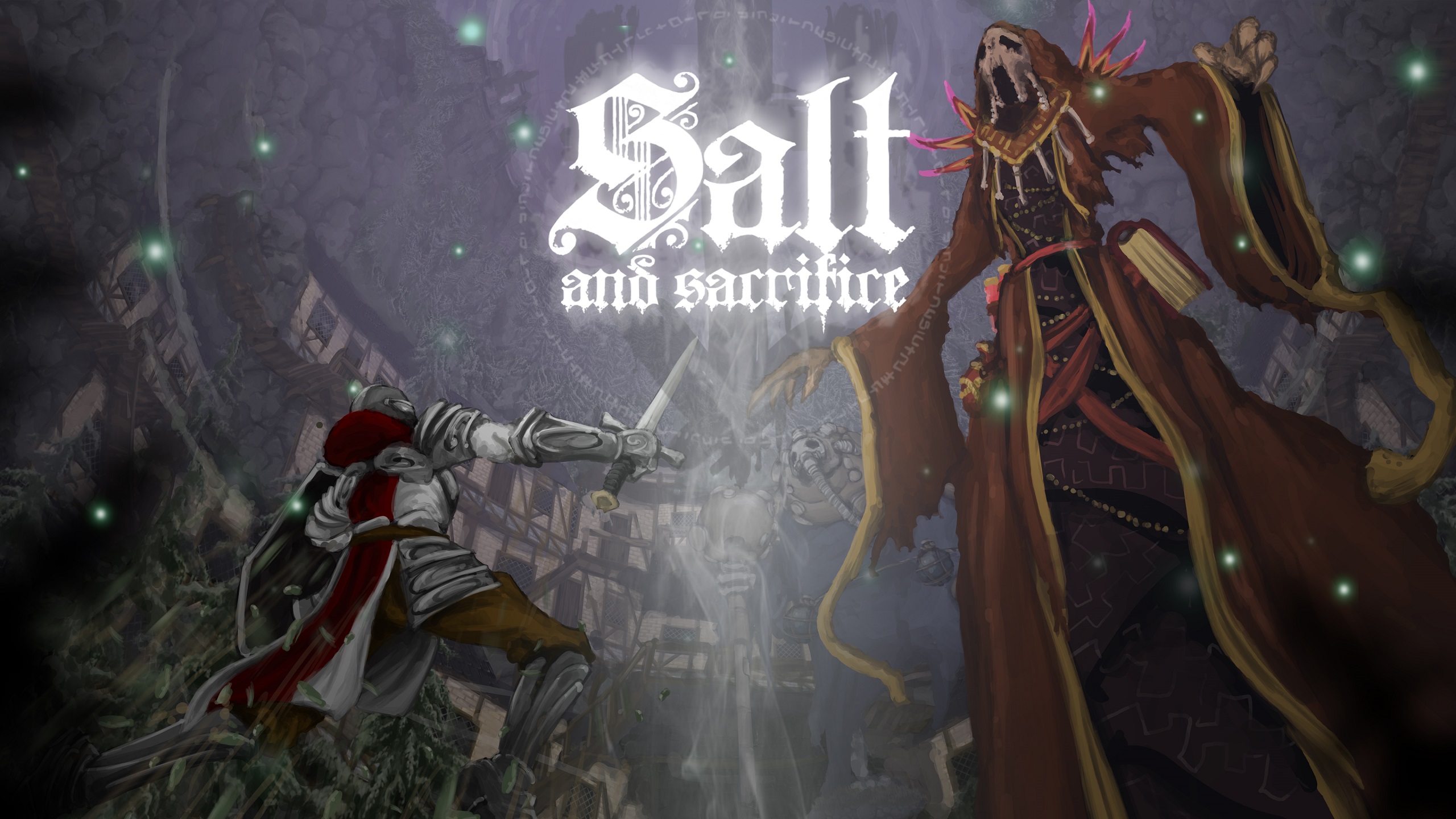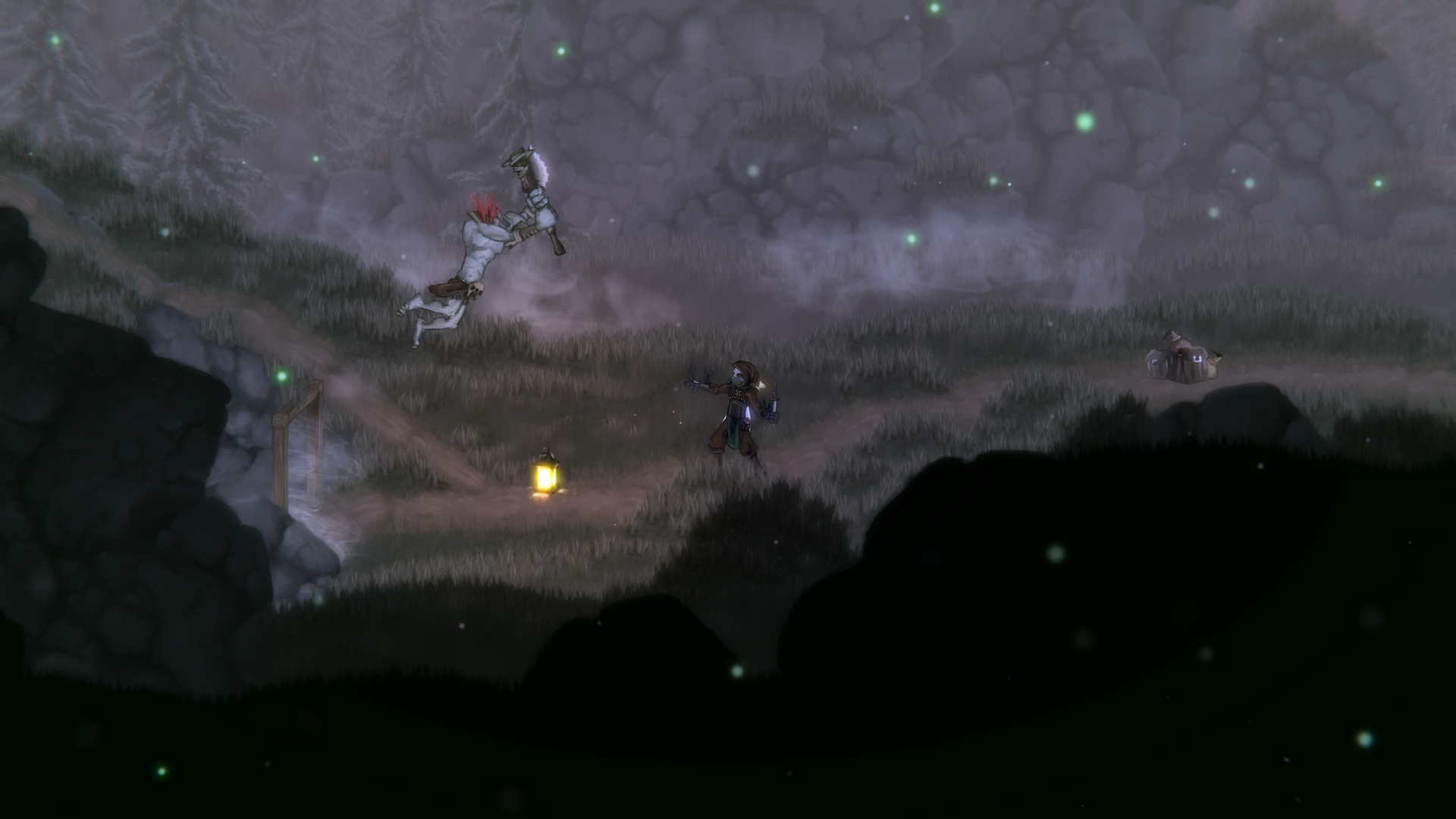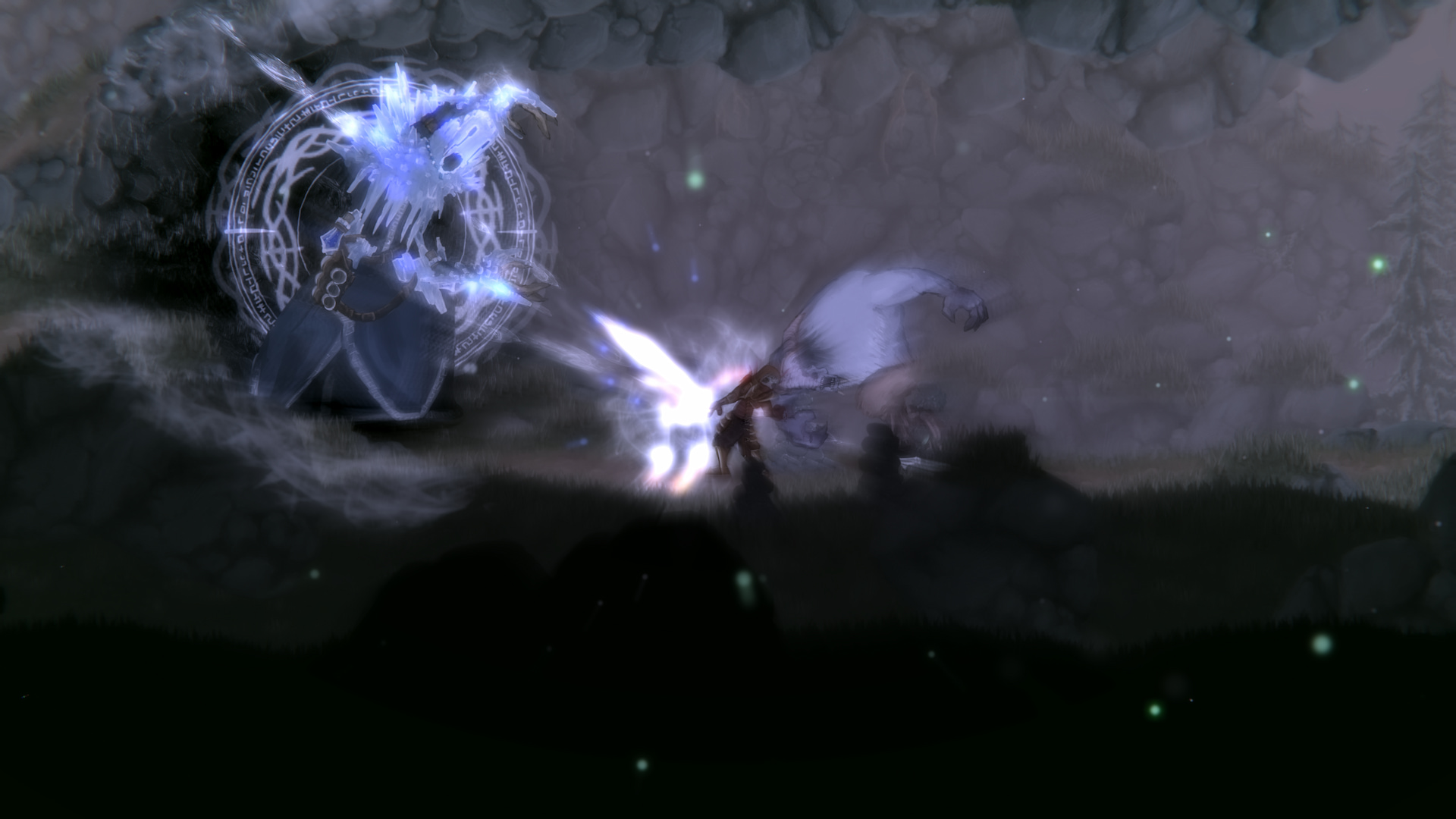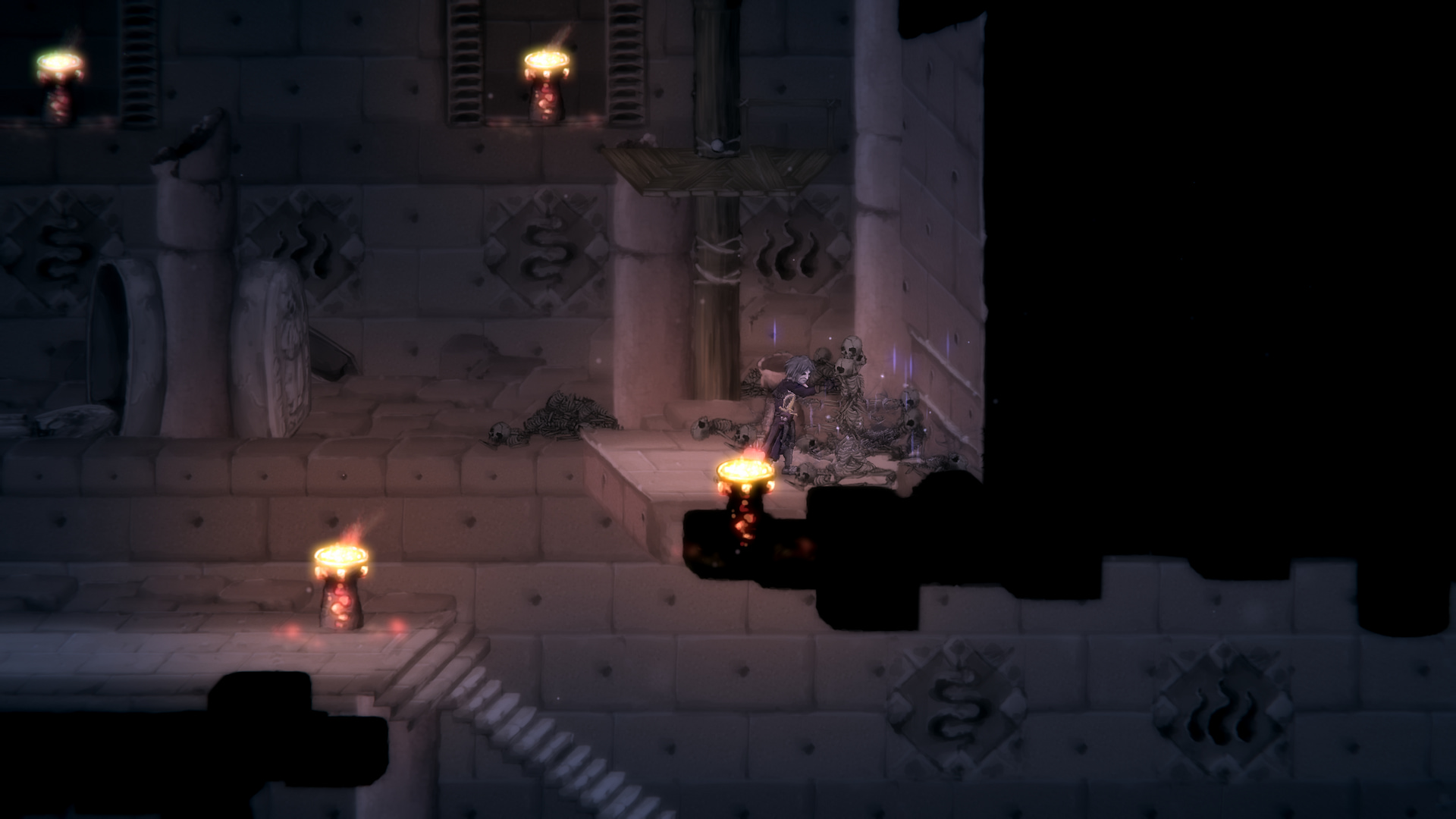Souls-likes are a notoriously difficult genre to get right. No two developers tackle the format the same way, and fewer still emulate the formula exactly. Salt and Sacrifice is as close to a classic Souls game as a 2D title can be, but it borrows or expands on other games’ ideas to find an identity of its own.
It’s part Metroidvania, a bit of Path of Exile, a touch of Monster Hunter, and plenty of the dark fantasy Souls fans enjoy. Salt and Sacrifice weaves these disparate mechanics and concepts together into a complex but still comprehensible whole.
It has more than a few rough edges, and some of the design decisions grate more than a little, but this is a game that sacrifices nothing for the sake of quality.
Salt and Sacrifice Review: No Sacrifice for Quality
You play an Inquisitor, tasked with the hunting of Mages, beings far more horrible than they’re portrayed elsewhere. You’re not told why these Mages need to be hunted, nor what the result of their extermination will be. You know only that doing so is penance for a grave crime you committed before the game began. Selecting this sin is a part of character creation and defines how certain NPCs interact with you.
After the opening cutscene and character creation, you’re dropped into Altarstone Kingdom and directed to seek any and all Mages, kill them, and devour their hearts. Bound by an ancient rite of your own, you will not die permanently, but being killed with rob you of some of your vigor.
So directed, you’ll set out to explore an interconnected world across five zones, plumbing their depths for new means of traversal, fighting both unique bosses and the Mages you’re sent to slay.
Each level in Salt and Sacrifice follows the Dark Souls philosophy of overlapping and looping design. No matter what Obelisk (the bonfire equivalent) you rest at, there will always be more than one way to reach your destination. You’ll unlock additional routes by collecting upgrades (a grappling hook, a cloth to catch the wind, etc.) or opening one-way doors accessible only after significant exploration.
Some shortcuts aren’t apparent at first and require map knowledge to gauge how to reach them. For instance, there is a shortcut not far from the first Obelisk in the desert level. You have to reach it from below, and it’s not immediately obvious where on the path the way up is.
That means using the shortcut’s location and estimating how far to travel horizontally to reach it. The path is somewhat hidden and filled with deadly enemies, making the path arduous and sometimes frustrating, but it is nonetheless a relief to have the way open.
The world flows seamlessly together once you’re outside the Pardoner’s Vale hub space. Doorways give way to new locations without a single loading screen. Combined with the interconnected level design, this makes for enjoyable traversal even without the Metroidvania upgrades.
Each zone is also visually distinct, following a specific three or four primary color palette and drawing on only one or two for most of your time there. Caves and dungeons follow the typical rules, usually of grey and black stone adorned with the ruins of their former occupants.
Progressing through the game opens up stranger and more fantastical locations. The dilapidated village gives way to a barren wasteland, leading to a sopping mire, and then on to even weirder, more horrid locales. I was consistently surprised and delighted by each new location. There’s only so much to do with a 2D space visually, and Salt and Sacrifice pushes every boundary it can in that respect.
Beyond their level design, Souls-likes are known for tight combat and epic boss fights. Salt and Sacrifice does an admirable job of trying to deliver on both and usually succeeds. There are five weapon types, each with its own movesets, strengths, and weaknesses. Combined with the Runic Arts, a kind of Weapon Art or Ash of War that modifies the weapon or your attacks in some way, and the craftable items, there’s a fair bit of build customization here.
Making a build is a tougher sell. Salt and Sacrifice uses a traditional set of stats — Strength, Dexterity, Vitality, Endurance, etc. — but upgrading them uses a Path of Exile-style stat-and-skill grid. Depending on which class you pick, you’ll already have a small portion of the skill grid filled out, pushing you toward specific builds and playstyles.
Starting as a Paladin sees the grid leaning toward heavy armor and heavy weapons, focusing on burst damage modified by Strength and helped by Endurance. The exact opposite end is Arcana and Luck, a completely separate set of gear types you’ll never have enough points to experiment with. This system works well but clashes with character creation, which gives no clues or hints as to how stats are distributed. This disconnect does and doesn’t make sense on a first playthrough.
On the one hand, presenting new players with the massive skill grid is as liable to turn them off the game as suck them in. On the other, without knowing how stats will be distributed, there’s no way of planning a proper build. You’re stuck with instincts and assumptions only, hoping the choice you make is the right one.
Complicating matters further is how you unlock the ability to use gear. Unlike other Souls-likes, where your stats govern what you can and can’t use, Salt and Sacrifice gates higher-quality gear behind a tier system. If you haven’t unlocked the skill node to use Tier 2 heavy armor, for instance, you simply can’t equip it, even if you’re swimming in the stuff. With such a limitation, choosing the “wrong” starting class could see you starting a new game to access the weapons and gear you wanted to use initially, rather than costing a few extra stat points and calling it a day.
One of the joys of Souls-likes is the freedom with which you can tackle any challenge. Between the cumbersome gear unlock system and some annoying boss fights, I often felt like I was being pushed to do one thing in a certain way or risk constant failure. That is one of Elden Ring’s greatest faults in its late game, with one obligatory boss before the final dungeon being the most egregious.
Bosses in Salt and Sacrifice are by nature usually fairly straightforward. Run up, strike 2-4 times, dodge, or otherwise avoid the counterattack; repeat until the boss dies. Two problems arise. The bosses are often too large for their arena, leaving precious little room to maneuver around their attacks. Movement isn’t as precise or tight as it could be, making dodging some attacks more of an exercise in futility than skill.
There’s also the issue with boss attack hitboxes and recovery times. Salt and Sarifice doesn’t have in-air invincibility for specific attacks, so if one attack hits you, you can easily be juggled to the next. This can happen as many times as you have the health to tank attacks. On its own, that’s not a bad design decision. It punishes careless play and incentivizes precise spacing.
But boss attack hitboxes linger as long as the boss attacks, so if you’re knocked into the air by the first hit, you could quickly end up taking two or three hits from the same hitbox. If that happens, you have no ability to properly recover, as the boss will likely be on top of you once the attack ends.
Salt and Sacrifice thankfully doesn’t have Eldest Souls’ problem of bosses preventing dodges. Still, it is constantly frustrating to watch myself get juggled not only by an attack that looked like it should juggle but by a single big weapon or fist that just kept moving toward me.
Adding to the annoyance is the lack of recovery time on some attacks. A large slam, even one by a boss that takes up half the screen, should have the boss recover. There were several times when that wasn’t the case, and instead of being given a moment to breathe and retaliate, I was frantically trying to get out of the way of an instant second attack.
Generally, though, my experience with the main story bosses was a good one. The fights are always fairly cinematic, and once I understood what attack did what, how, and when, it was a small matter to react accordingly. You can deal with even the frustrating or poorly designed bits, provided you know they are coming. It’s the mark of an ultimately solid Souls-like if perseverance, knowledge, and experimentation are sufficient to overcome a challenge.
Every Mage you defeat opens up the opportunity to craft their gear using the materials they and their summoned mobs drop. Defeat also causes them to spawn randomly on the map, making them farmable for different weapons, armor, rings, and other equipment. There are also Focus Hunts, randomly generated Mage hunts focused on target-farming specific loot. These are something of an endgame activity, but one you can participate in whenever you unlock them.
It is disappointing there is no way to craft regular boss equipment, as some of them have unique weapons and armor that could have been fun to use. Thankfully, there are plenty of different Mage types to slay, and all of them are mechanically distinct in a way that also translates into their craftable gear.
The type of gear you can craft depends on the kind of Mage. Big, lumbering brutes become heavy armor and weapons, the limber, fast-moving ones become light armor and weapons, and everywhere in between. As much frustration as there is in the conflict between starting class and skill grid, there’s plenty of replayability here. The first playthrough of any Souls-like save games like Nioh is bound to be unoptimized and inefficient. There’s no doubt going in with something specific in mind, with full knowledge of the skill grid, will be an entirely different experience.
It’s a shame then that the music in Salt and Sacrifice is so bland compared to some of its better designs and ideas. There was nothing too memorable, and while the music does get better for later boss fights, that should be expected.
The story also leaves a bit to be desired, not because it is bad or uninteresting (it isn’t); it is jarring how much it gets thrown in your face by every NPC. There is a lot more telling than showing in Salt and Sacrifice, with characters around the world more than happy to expound upon the last thing you killed or this or that topic you just learned about. The environmental storytelling is a bit better, and the environments themselves are always exciting to discover.
Salt and Sacrifice Review — The Bottom Line
Pros
- A vast, weird world to explore and discover.
- Weighty combat that has a surprising amount of depth.
- A ton of satisfying boss fights to conquer.
Cons
- A somewhat forgettable soundtrack.
- The occasional frustrating fight with bosses or standard enemies.
- Wonky hitboxes and boss reaction times.
Salt and Sacrifice is a labor of love for its genre, one that will scratch any veteran’s itch for more mysterious worlds to explore. It never reaches the heights of the best Souls-likes but never sinks to the lows of those that attempt and fail to work within the framework.
It should be commended for its scope, the lion’s share of its mechanic and system design, and the strangeness of the world in which you play. Even those concepts it borrows from other successful titles play to its strengths. In spite of its thankfully few stumbles, there are few games on the market that do quite what Salt and Sacrifice does, and few do it as well.
[Note: Ska Studios provided the copy of Salt and Sacrifice used for this review.]













Published: May 8, 2022 10:32 pm